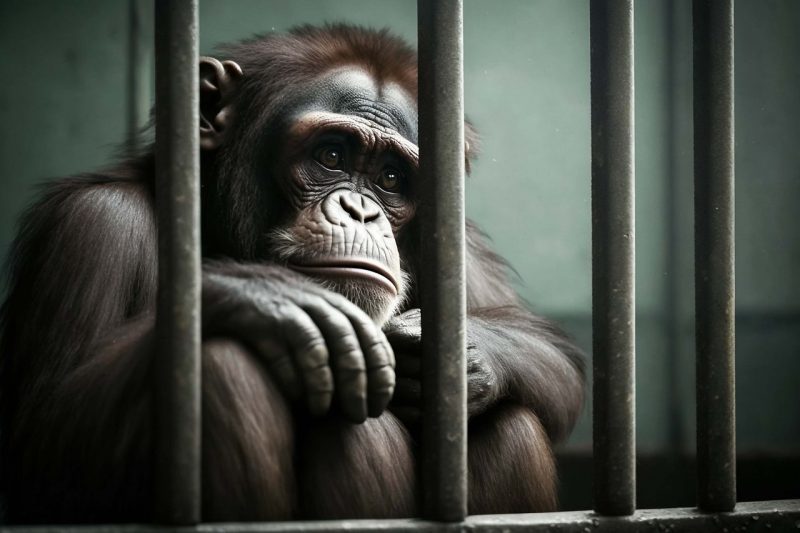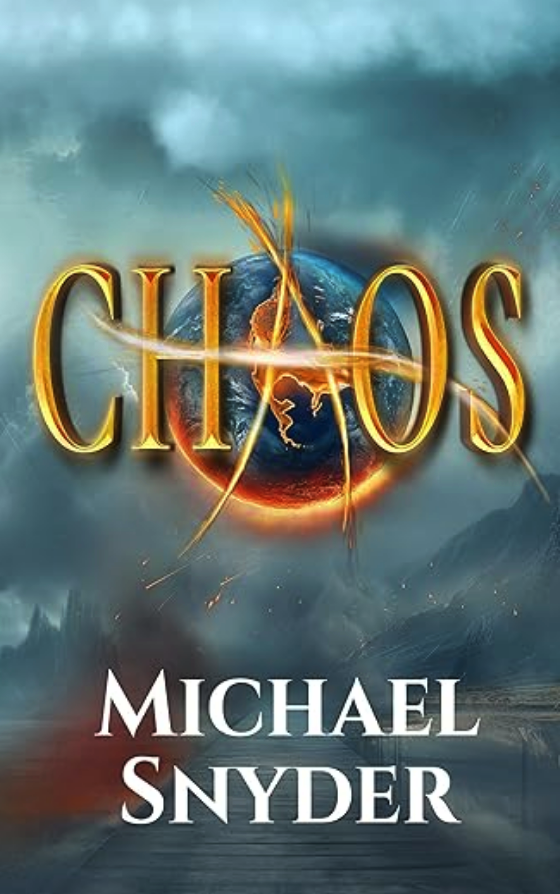Do you believe that scientists should be creating entities that are part-human and part-animal? Do you believe that scientists should be creating lab-grown “synthetic” human embryos that that do not require eggs or sperm? Do you believe that scientists should be performing “gain of function” research on the deadliest diseases ever known to humanity? Unfortunately, all of these things are already happening in secret labs all over the planet. Our world is filled with mad scientists that have absolutely no problem doing “Island of Dr. Moreau level stuff”, but of course they won’t want to take any accountability if the horrifying creatures and diseases they unleash upon the world end up causing enormous problems.
This week, we learned that a team of scientists in China was able to clone a rhesus monkey and keep it alive for two years…
Scientists in China on Tuesday announced that they have cloned the first healthy rhesus monkey, a two-year-old named Retro, by tweaking the process that created Dolly the sheep.
Primates have proved particularly difficult to clone, and the scientists overcame years of failure by replacing the cloned cells that would become the placenta with those from a normal embryo.
They hope their new technique will lead to the creation of identical rhesus monkeys that can be experimented on for medical research.
Could this technique be used to create an army of identical cloned monkeys?
Sure.
Could it also be used to create an army of identical cloned humans?
Let’s hope that we never find out.
Another team of researchers in China has created a monkey from two separate embryos. It is being reported that this infant monkey has an “eerie green glow“…
Scientists have just achieved a milestone in stem-cell biology after creating a monkey from two embryos. And proof of the achievement, perhaps unnervingly, showed up in the infant primate’s eerie green glow.
Although research labs have created such “chimeras,” or organisms with cells from two distinct sources, in rats and mice, monkeys have been more challenging to work with because of their increased biological complexity and longer gestation and maturation time. In previous attempts, scientists have struggled to successfully incorporate injected stem cells into a monkey, with less than 5 percent of the final organism grown from donor cells. In the new work, published November 9 in Cell, researchers managed to create a monkey that had an average of more than 60 percent donor cell expression across tested organs.
We should all be extremely alarmed when we read about experiments such as this.
But at least the first two examples that I have shared with you did not involve human genetic material.
Last June, researchers in the UK created “synthetic human embryos” without using human eggs or human sperm…
Scientists have created synthetic human embryos using stem cells, in a groundbreaking advance that sidesteps the need for eggs or sperm.
Scientists say these model embryos, which resemble those in the earliest stages of human development, could provide a crucial window on the impact of genetic disorders and the biological causes of recurrent miscarriage.
However, the work also raises serious ethical and legal issues as the lab-grown entities fall outside current legislation in the UK and most other countries.
Could such embryos be “grown” to maturity in a lab setting?
If so, is this something that could be done on an industrial scale?
And once they enter the world, would such entities be considered human?
In other cases, scientists are actually creating entities that are part-human and part-animal.
For example, scientists in China have been able to grow “kidneys containing human cells in pig embryos”, but some human cells also ended up in the brains of the pigs…
Chinese scientists have succeeded in growing kidneys containing human cells in pig embryos, a world first that could one day help address organ donation shortages.
But the development, described in a study in the journal Cell Stem Cell on Thursday, raises ethical issues—especially since some human cells were also found in the pigs’ brains, experts said.
The researchers from the Guangzhou Institutes of Biomedicine and Health focused on kidneys because they are one of the first organs to develop, and the most commonly transplanted in human medicine.
That is just sick.
Let me give you another example that is even more alarming.
It is being reported that a “mutant coronavirus strain” that was created in China was able to kill 100 percent of the “humanized mice” that it was tested on…
Chinese scientists have been experimenting with a mutant coronavirus strain that is 100 percent lethal in mice — despite concerns such research could spark another pandemic.
Scientists in Beijing — who are linked to the Chinese military — cloned a Covid-like virus found in pangolins, known as GX_P2V, and used it to infect mice.
The mice had been ‘humanized’, meaning they were engineered to express a protein found in people, with the goal being to assess how the virus might react in humans.
Yeah, that is just what we need.
Why in the world would scientists ever create such a mutant strain?
And why would they test it on creatures that are mostly mice but that are also part human?
According to the Daily Mail, every single one of the “humanized mice” that the strain was tested on was dead within 8 days…
Every rodent that was infected with the pathogen died within eight days, which the researchers described as ‘surprisingly’ quick.
The team were also surprised to find high levels of viral load in the mice’s brains and eyes – suggesting the virus, despite being related to Covid, multiplies and spreads through the body in a unique way.
If something like this got out, what would happen?
Right now, there is so much speculation about “Disease X”, and the WEF is certainly not helping matters by making it one of the primary topics of discussion at their yearly gathering.
And media outlets around the globe are certainly fueling the hype machine by declaring that “Disease X” could potentially kill 50 million people…
Global health experts are warning of a new pandemic, dubbed ‘Disease X’ by the World Health Organisation, that could be 20 times deadlier than Covid-19 and potentially claim 50 million lives. This looming threat could strike at any moment and is likely to have a far greater impact than Covid, which caught the world off guard in early 2020.
I don’t think that we should be giving a hypothetical disease a name and be speculating about potential death rates.
But without a doubt I do believe that extremely deadly pestilences will be very common during the years ahead.
As you sleep tonight, crazed researchers all over the globe will be performing extremely bizarre experiments on some of the deadliest diseases on the entire planet.
And in many cases, they will be purposely trying to make those diseases even deadlier.
Such experiments really are an existential threat to all of us, and it is just a matter of time before more “accidents” happen.
Michael’s new book entitled “Chaos” is now available in paperback and for the Kindle on Amazon.com, and you can check out his new Substack newsletter right here.
About the Author: My name is Michael and my brand new book entitled “Chaos” is now available in paperback and for the Kindle on Amazon.com. In addition to my new book I have written seven other books that are available on Amazon.com including “7 Year Apocalypse”, “Lost Prophecies Of The Future Of America”, “The Beginning Of The End”, and “Living A Life That Really Matters”. (#CommissionsEarned) When you purchase any of these books you help to support the work that I am doing, and one way that you can really help is by sending copies as gifts to family and friends. Time is short, and I need help getting these warnings into the hands of as many people as possible. I have also started a brand new Substack newsletter, and I encourage you to subscribe so that you won’t miss any of my articles. I have published thousands of articles on The Economic Collapse Blog, End Of The American Dream and The Most Important News, and the articles that I publish on those sites are republished on dozens of other prominent websites all over the globe. I always freely and happily allow others to republish my articles on their own websites, but I also ask that they include this “About the Author” section with each article. The material contained in this article is for general information purposes only, and readers should consult licensed professionals before making any legal, business, financial or health decisions. I encourage you to follow me on social media on Facebook and Twitter, and any way that you can share these articles with others is definitely a great help. These are such troubled times, and people need hope. John 3:16 tells us about the hope that God has given us through Jesus Christ: “For God so loved the world, that he gave his only begotten Son, that whosoever believeth in him should not perish, but have everlasting life.” If you have not already done so, I strongly urge you to invite Jesus Christ to be your Lord and Savior today.

